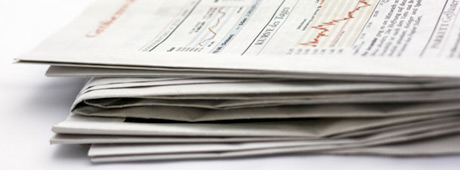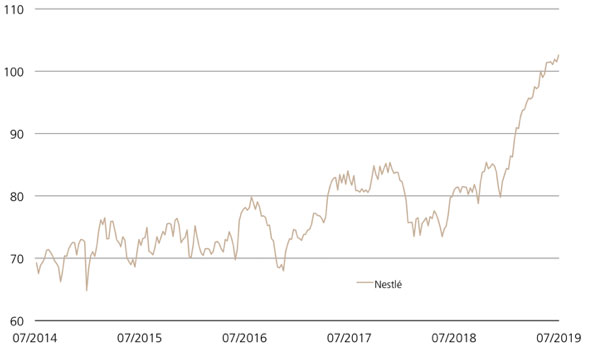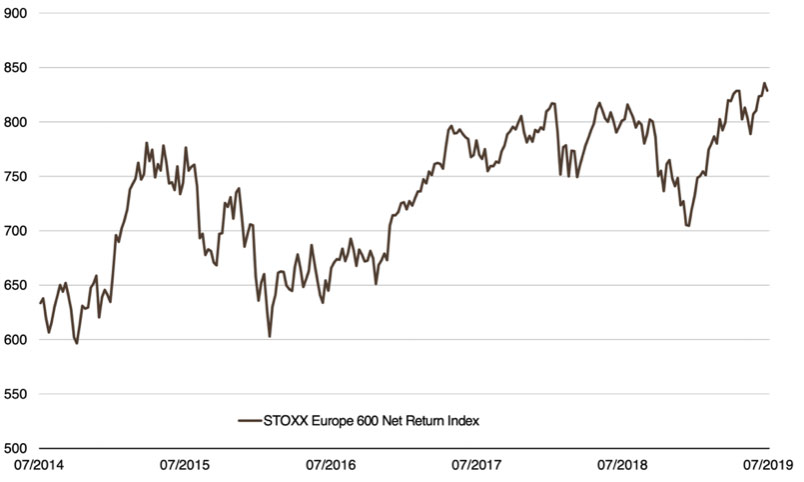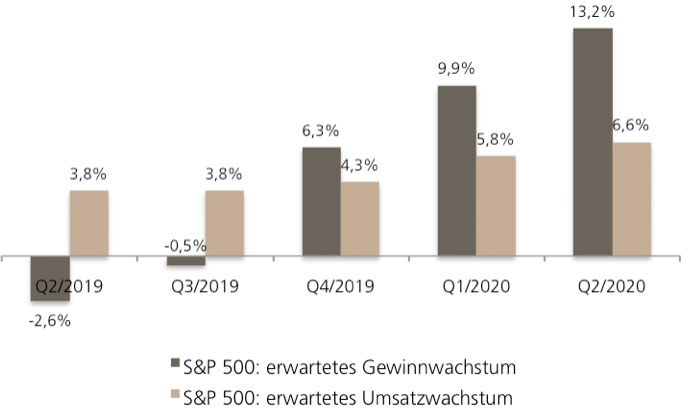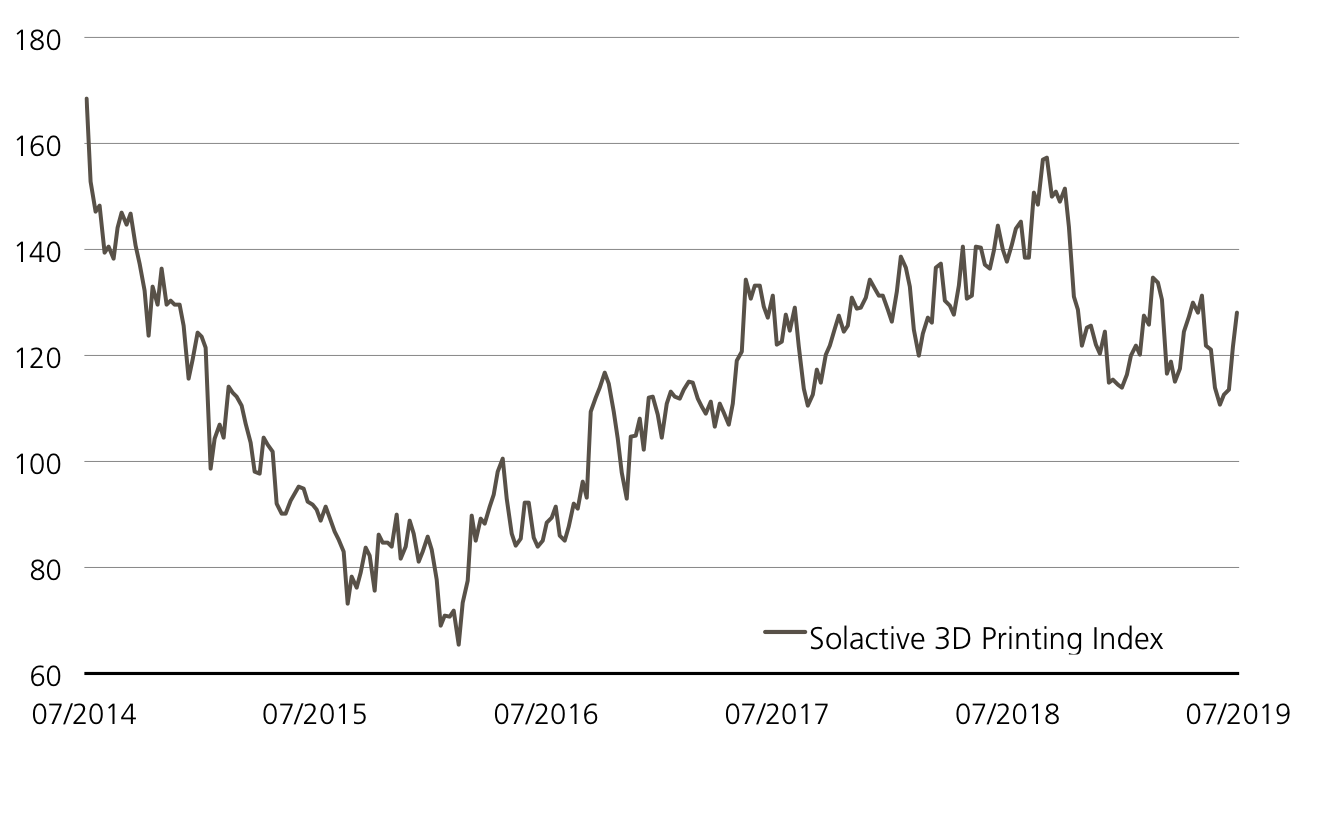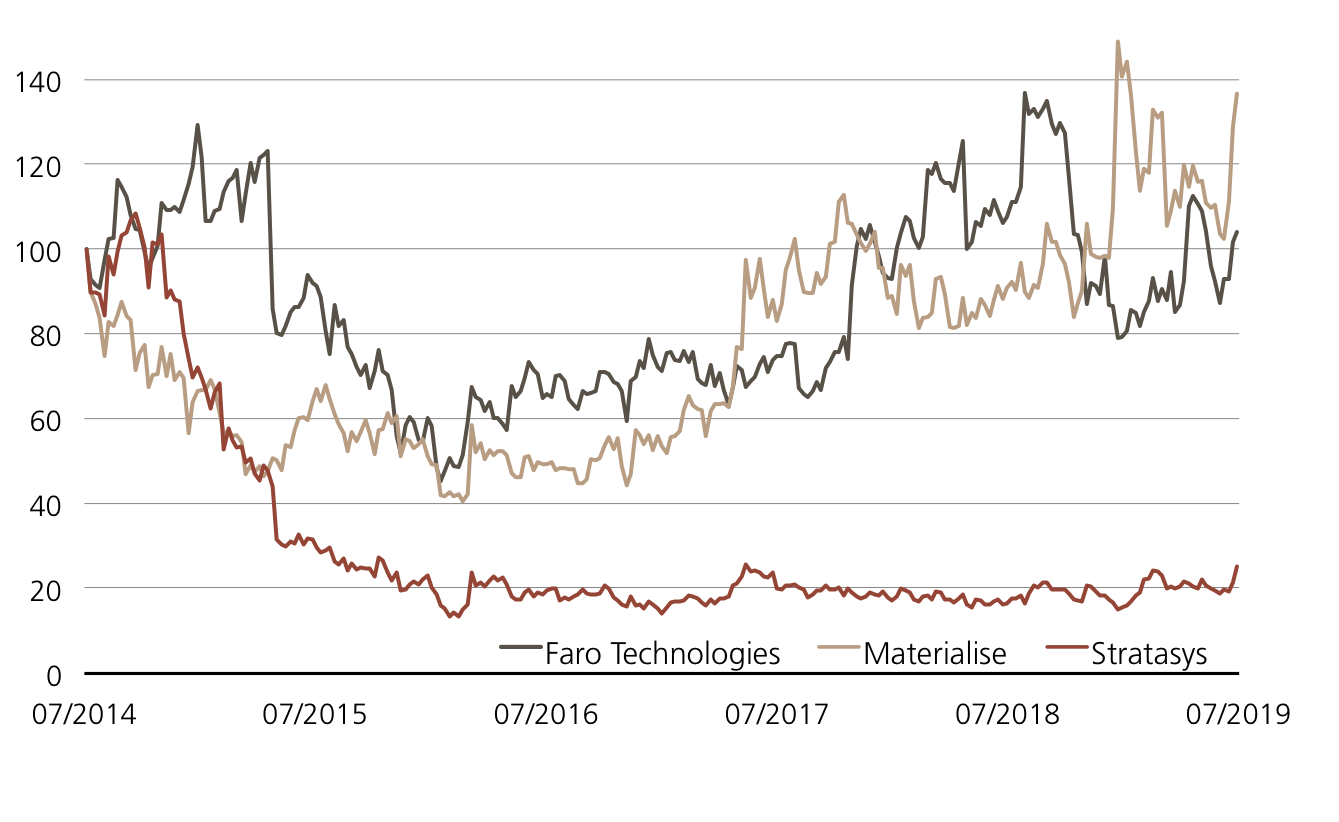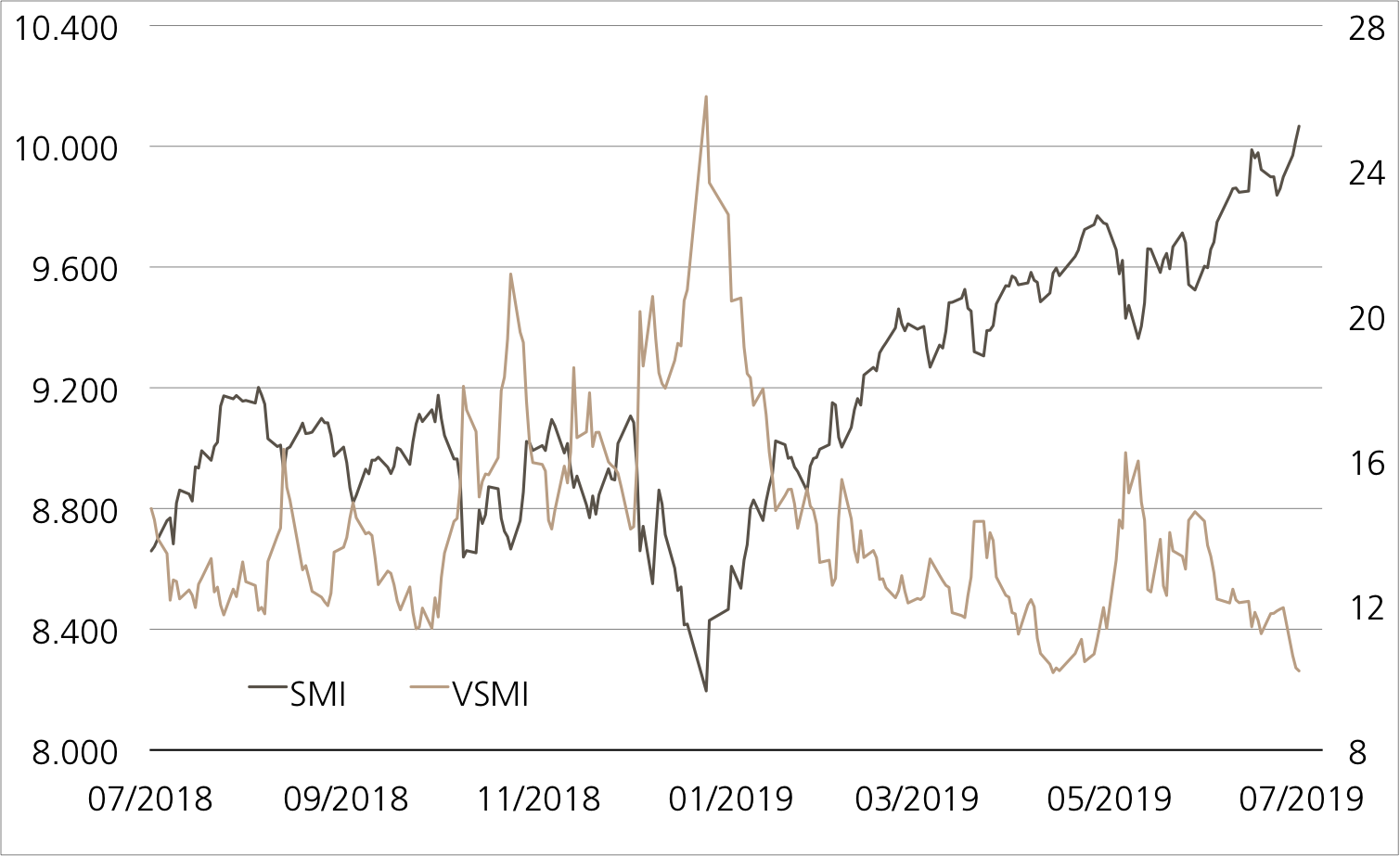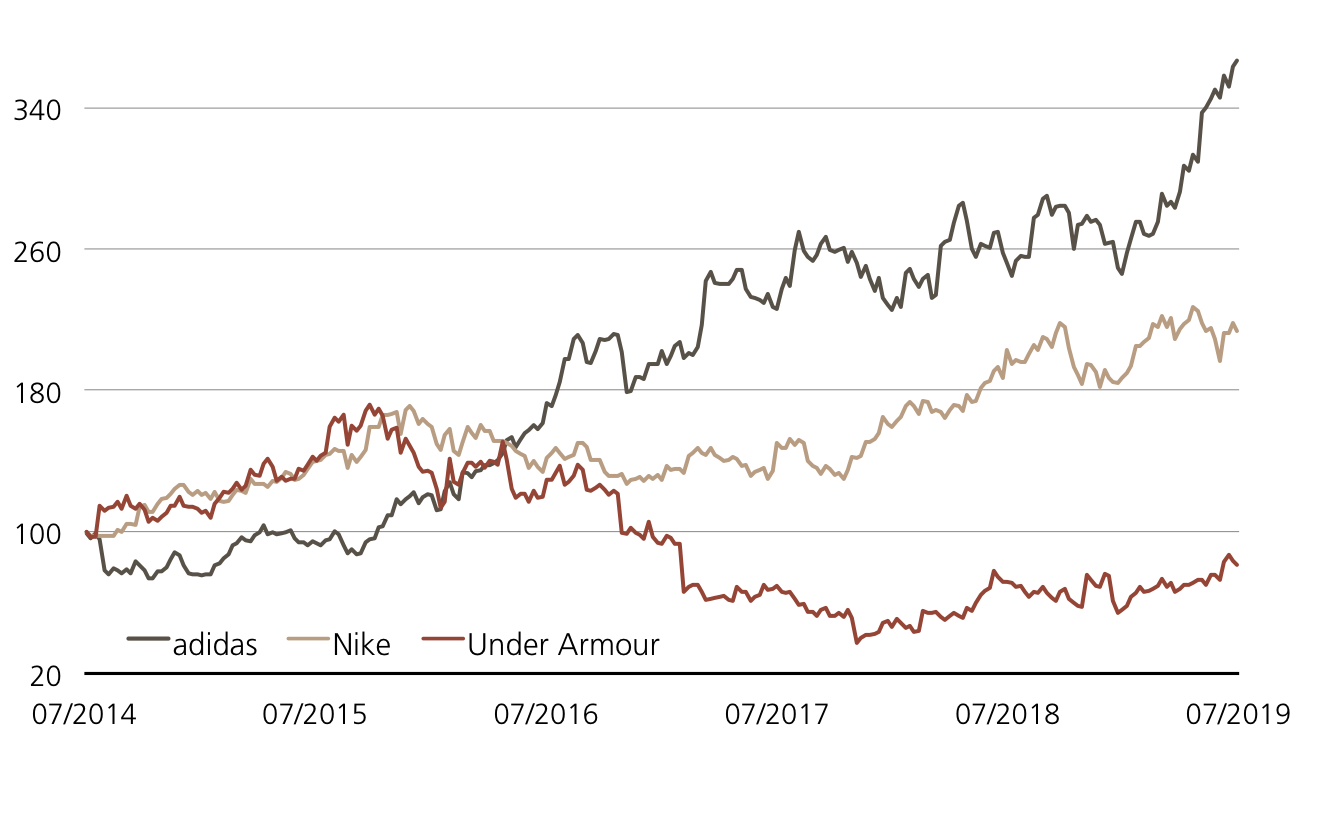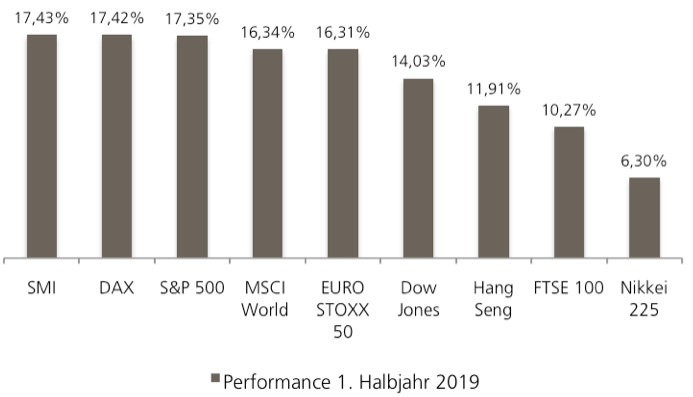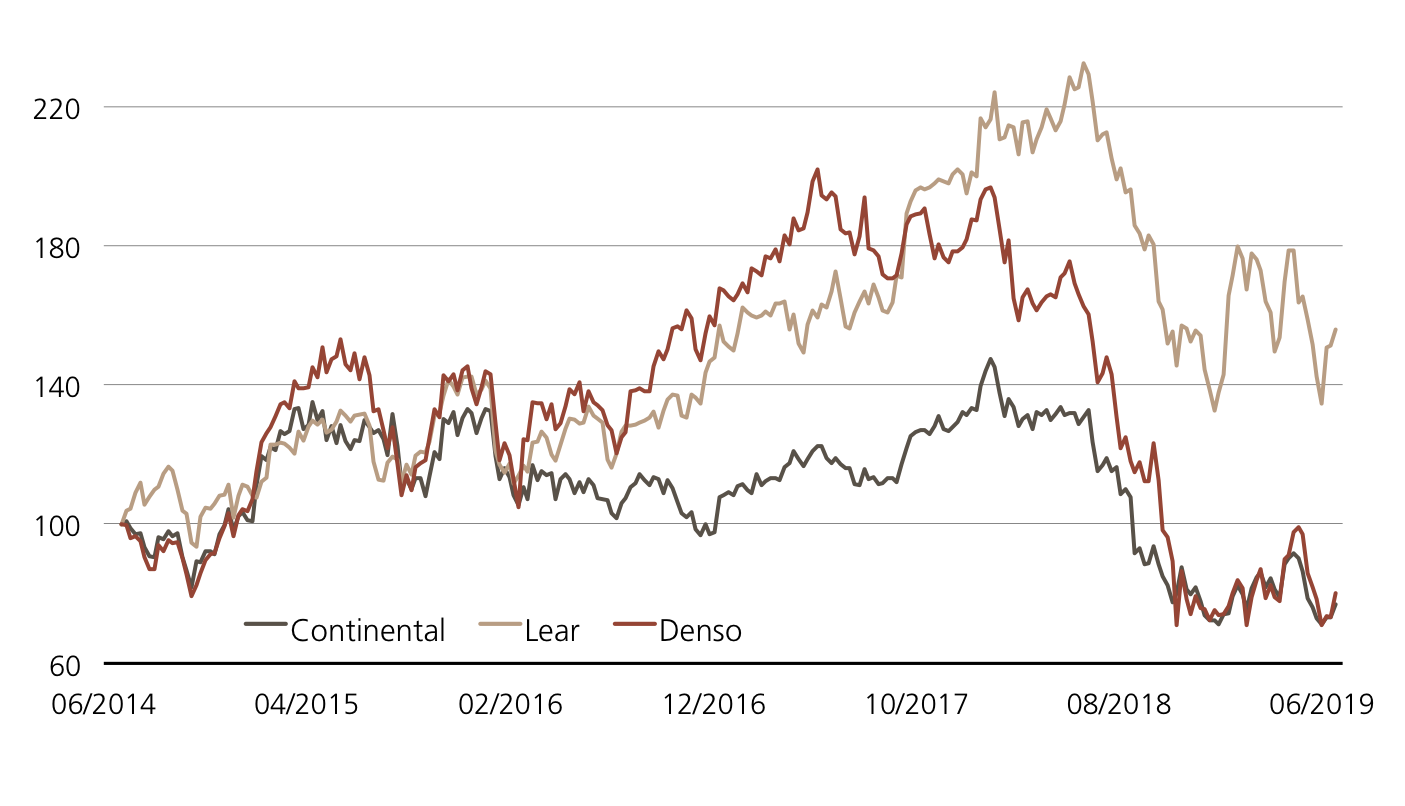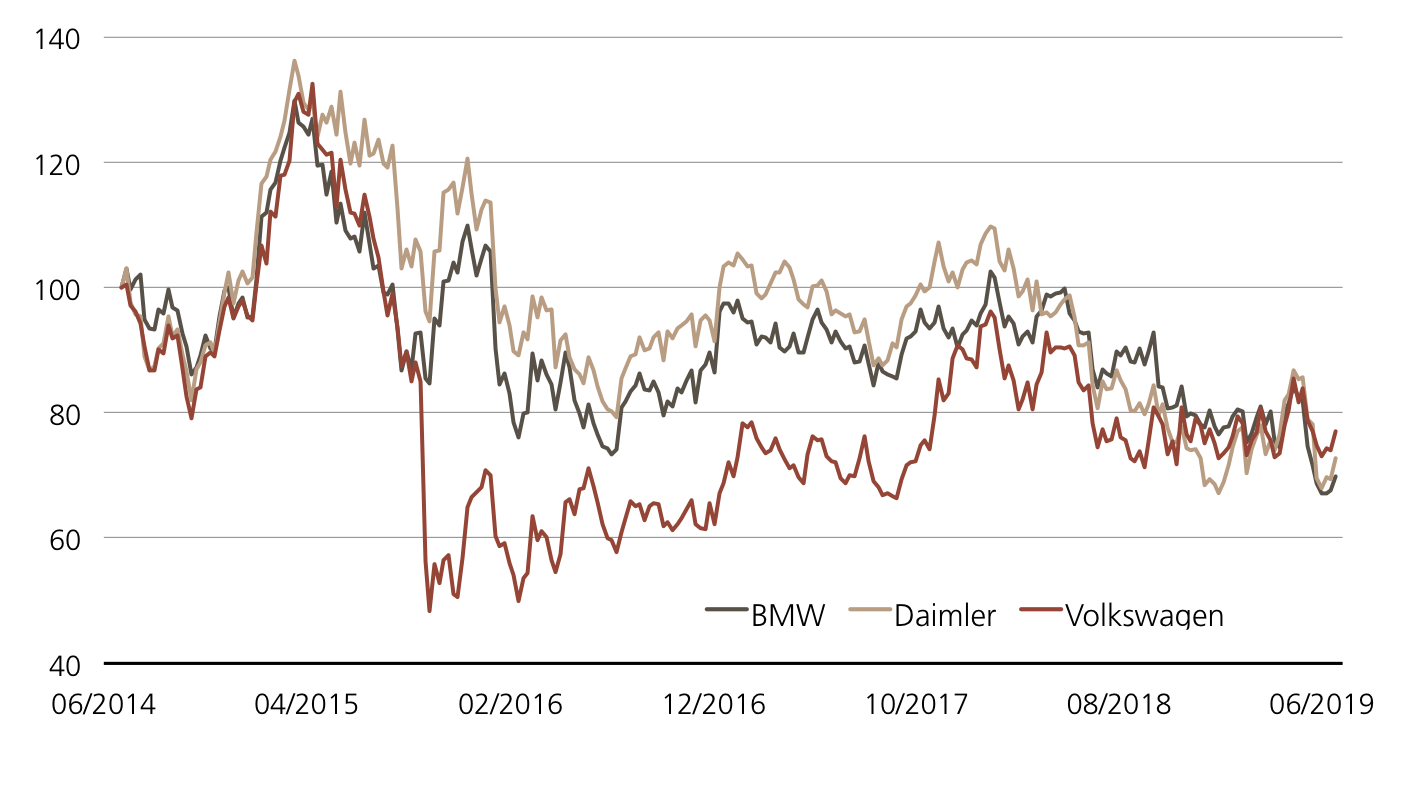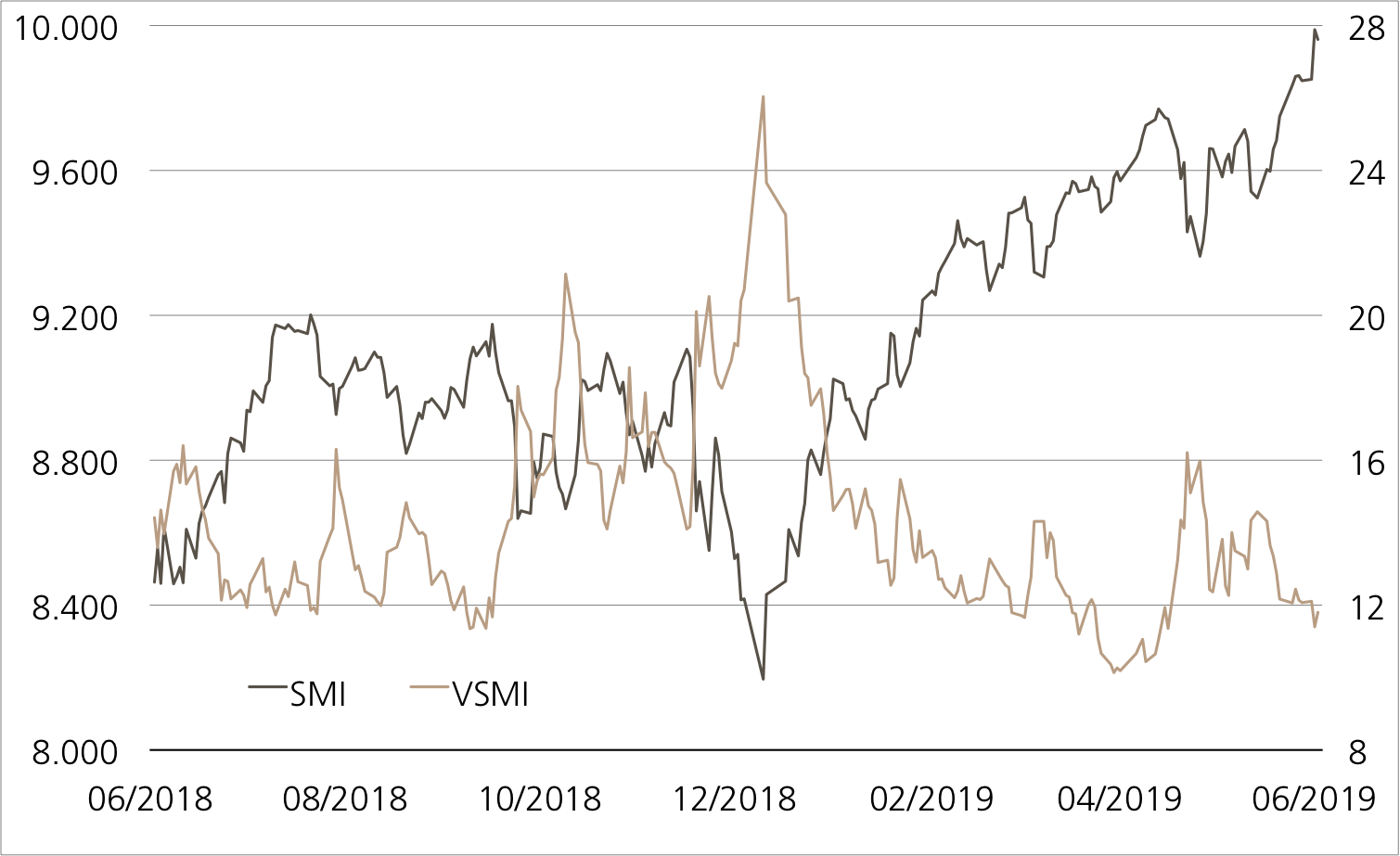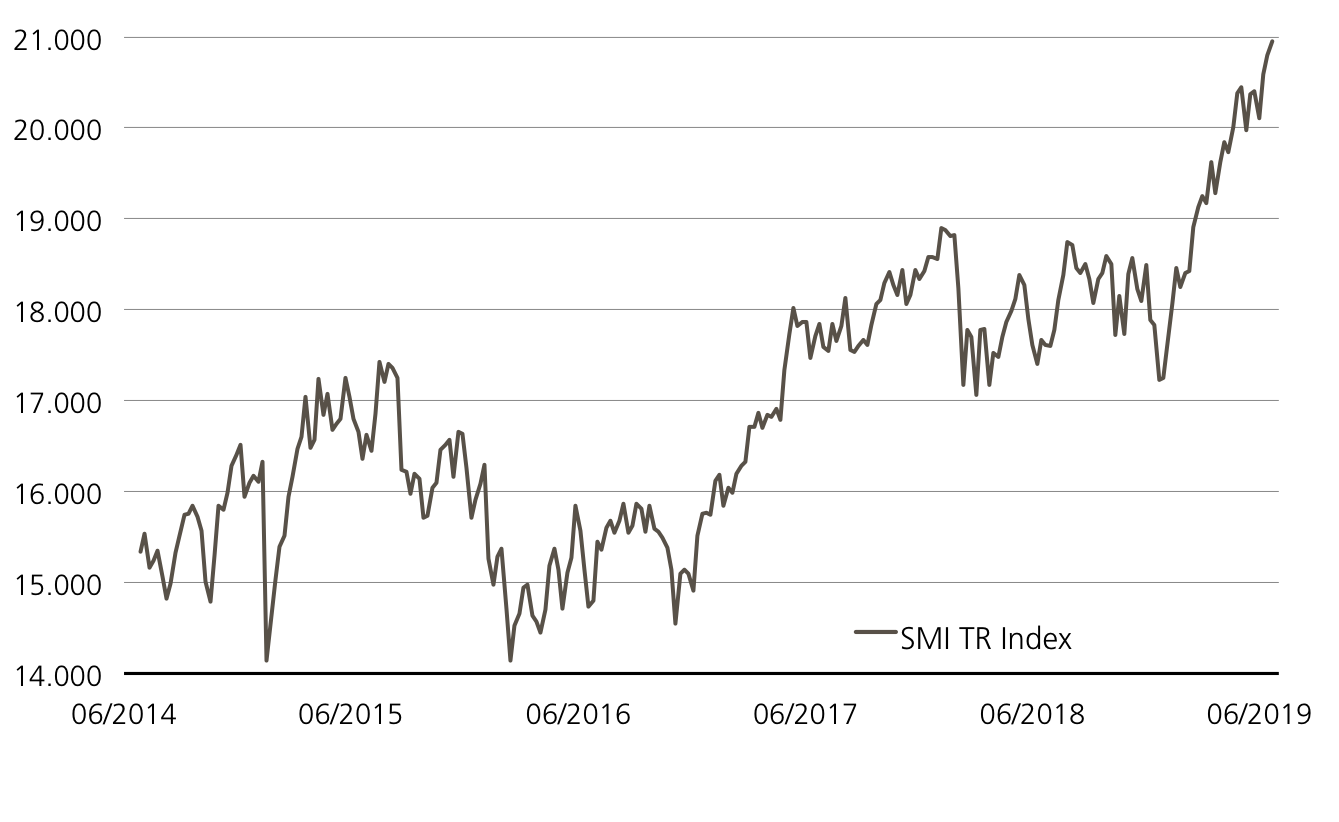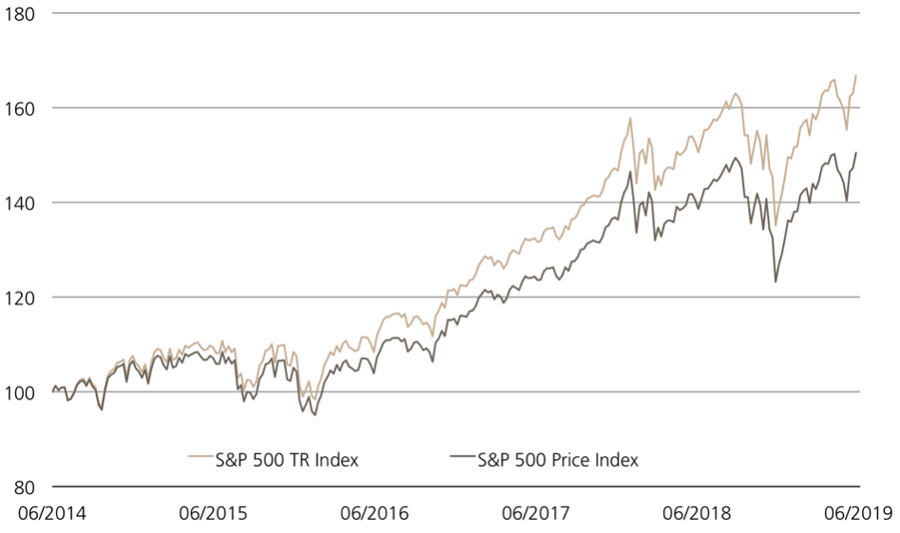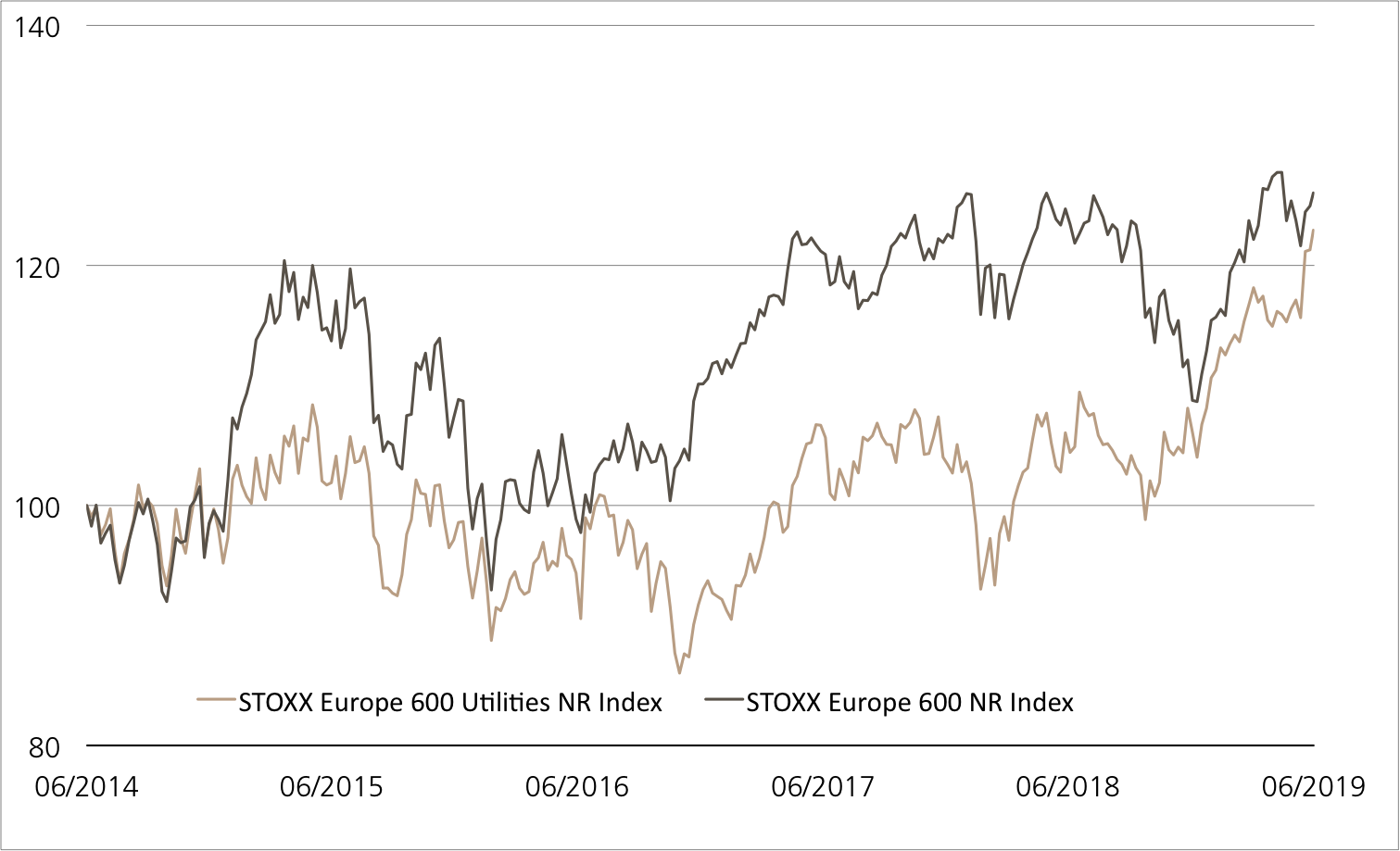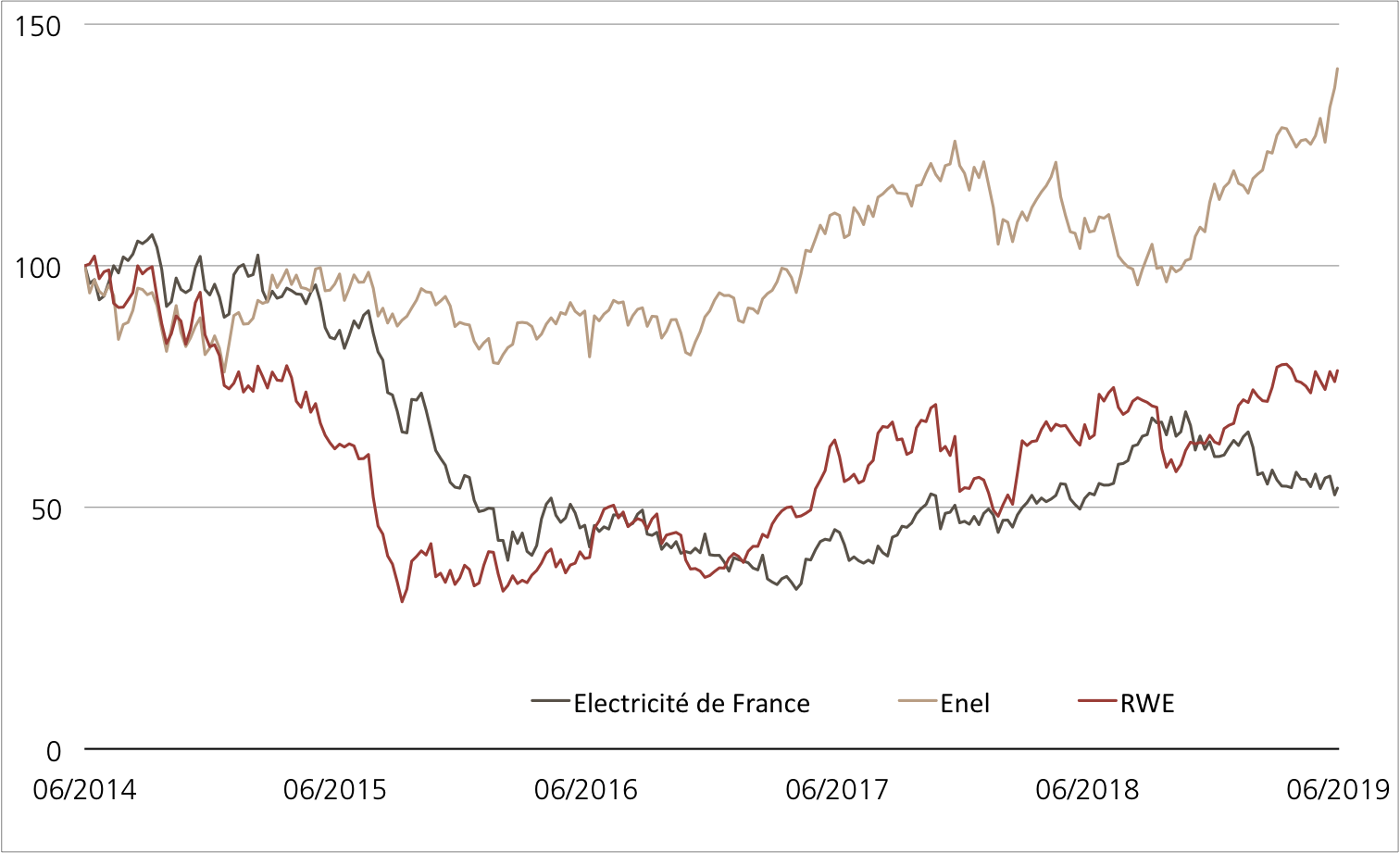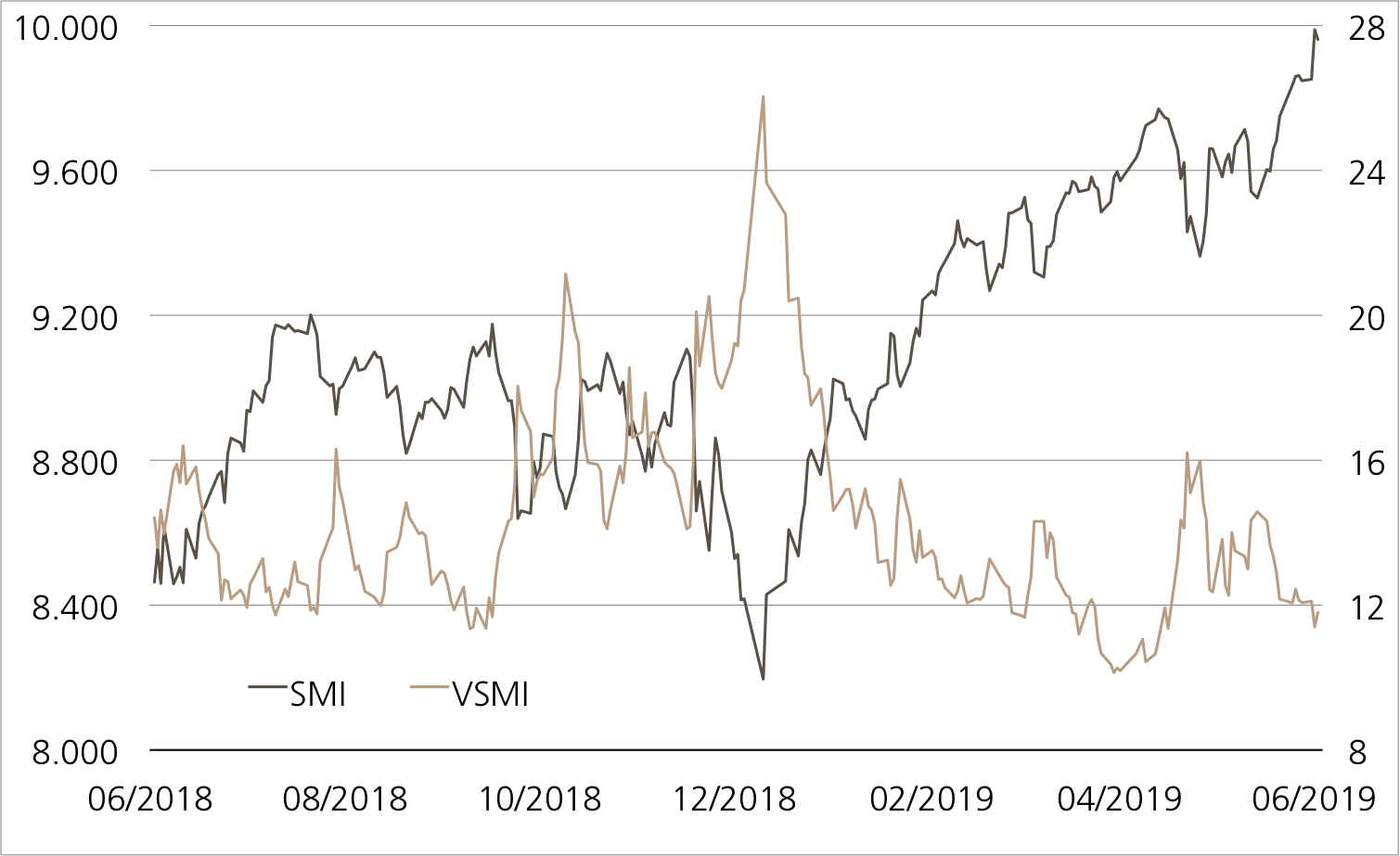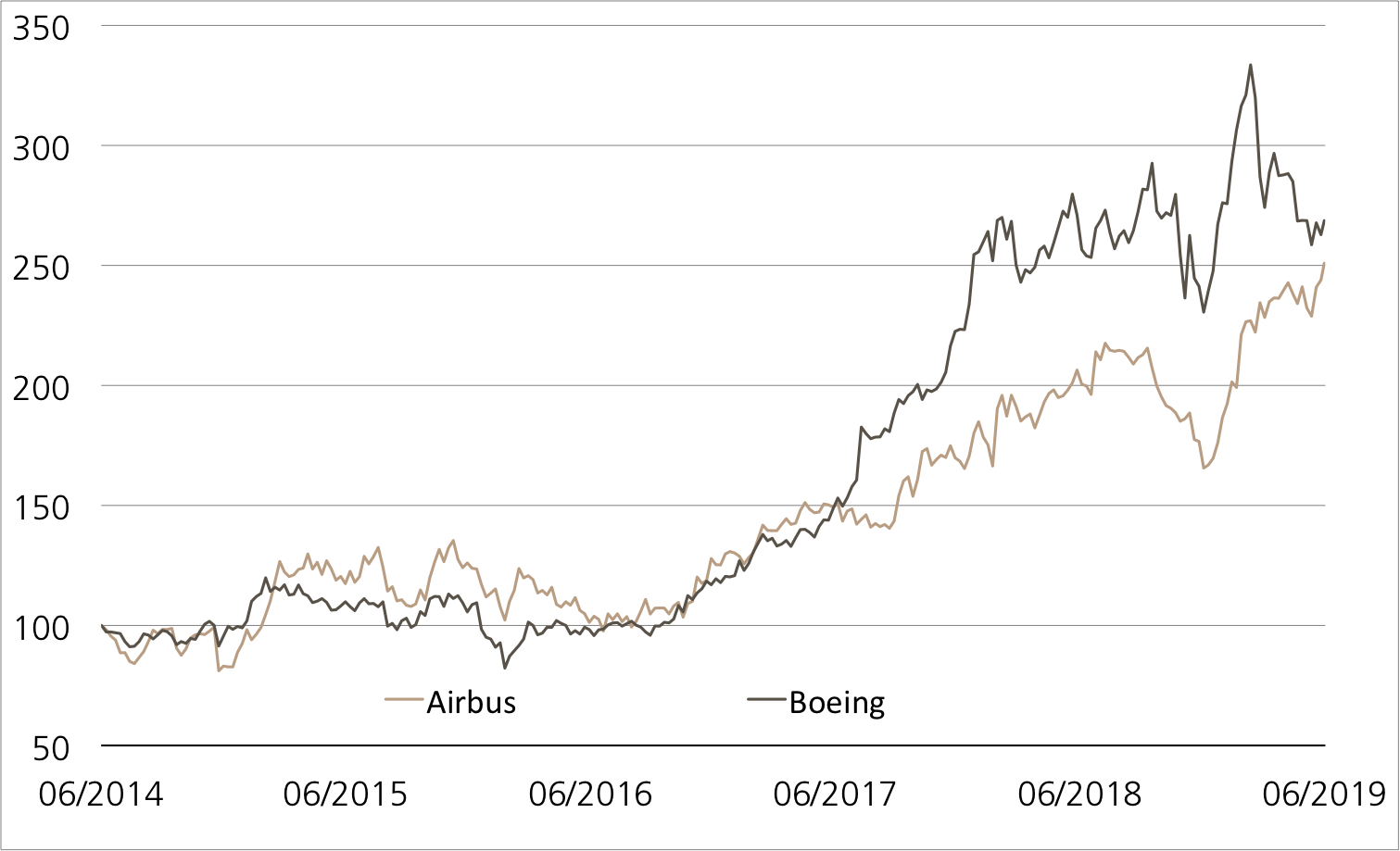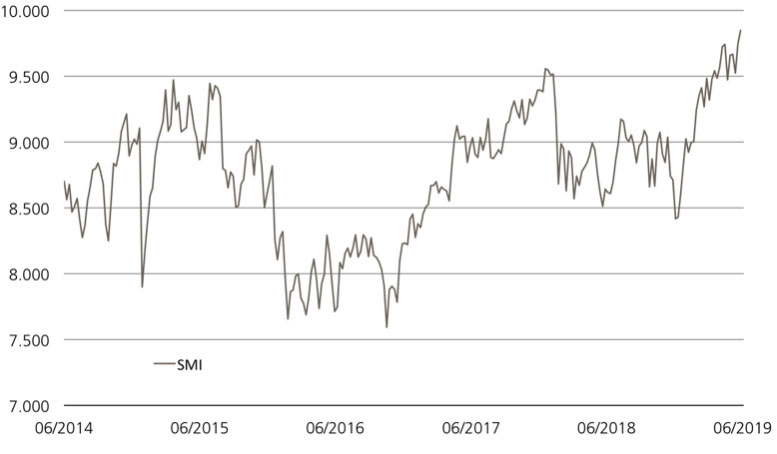Volles Programm vor dem Nationalfeiertag
29. Juli 2019 – UBS Wochenkommentar Rück-/Ausblick
Volles Programm vor dem Nationalfeiertag
Auf der Zielgeraden des Börsenmonats Juli ist noch einmal für jede Menge Spannung gesorgt. Nicht nur, dass zahlreiche Unternehmen – diesseits wie jenseits des Atlantiks –Zahlen präsentieren. Die US-Notenbank sorgt am Mittwoch mit ihrem Zinsbeschluss für einen mit Spannung erwarteten Monatsfinal. An der Wall Street herrschte vor der Fed-Sitzung Kauflaune.
Im Juli sind am US-Aktienmarkt wieder einmal markante Kursmarken gefallen: Während der S&P 500™ Index auf mehr als 3‘000 Punkte kletterte, überwand der Dow Jones Industrial Average™ die Schwelle von 27‘000 Zählern.1 Ein treibender Faktor für die Rekordjagd an der Wall Street ist die Aussicht auf eine Lockerung der Geldpolitik. Diesbezüglich lässt die Börsen-Dramaturgie nichts zu wünschen übrig. Der Monat geht mit einer zweitägigen Sitzung der US-Notenbank zu Ende. Am 31. Juli, 20:00 Uhr MESZ, wird sie die aktuelle Beschlusslage publizieren.
Fed vor der geldpolitischen Kehrtwende
An den Börsen gilt es als ausgemachte Sache, dass der von Fed-Präsident Jerome Powell geleitete Offenmarktausschuss den Leitsatz um 25 Basispunkte auf die neue Spanne 2.0 bis 2.25 Prozent heruntersetzt. Damit würde die US-Notenbank nicht nur die erste Senkung seit dem Krisenjahr 2008 vornehmen. Gleichzeitig wäre der geldpolitische „U-Turn“ des Jahres perfekt. Ende 2018 hatte das Fed die Zinsen noch erhöht und für 2019 zwei weitere Schritte nach oben in Aussicht gestellt. Einen Strich durch diese Planung machte der Notenbank vor allem der notorische Handelsstreit zwischen den USA und China. Der Disput gilt als ein Grund dafür, dass sich die Konjunktur in der grössten Volkswirtschaft der Welt abgekühlt hat. Gleichwohl kann von einer Rezession nicht die Rede sein. Vielmehr dehnte sich das Bruttoinlandsprodukt in den Staaten im ersten Quartal 2019 um 2.1 Prozent aus. Gleichzeitig herrschte zumindest bis Mitte Jahr mehr oder weniger Vollbeschäftigung. (Quelle: Thomson Reuters, Medienbericht, 27.07.2019)
Wie sich der Arbeitsmarkt im Juli entwickelt hat, erfahren die Märkte am Freitagnachmittag unserer Zeit. Dann wird in Washington der monatliche Report „Nonfarm-Payrolls“ veröffentlicht. Zu diesem Zeitpunkt dürfte sich so mancher heimischer Anleger bereits in das verlängerte Wochenende verabschiedet haben. Wegen dem Nationalfeiertag bleibt die Schweizer Börse SIX am Donnerstag, 1. August, geschlossen. Bis dahin laufen diesseits wie jenseits des Atlantiks noch jede Menge Unternehmensmeldungen über die Ticker. Im SMITM hat die Berichtssaison Ende vergangener Woche mit dem Zahlenwerk von Nestlé einen Höhepunkt erreicht. Im zweiten Quartal 2019 verzeichnete der Lebensmittelriese die höchste Wachstumsrate seit drei Jahren – daraufhin kletterte Large Cap auf ein Allzeithoch.¹ (Quelle: Thomson Reuters, Medienbericht, 26.07.2019).
Prominente Marken, starke Performance
An der Wall Street meldet sich morgen Abend ein absolutes Schwergewicht zu Wort: Nach Börsenschluss veröffentlicht Apple die Bilanz für das dritte Quartal der Fiskalperiode 2019 (per Ende September). Wenige Tage vor dem Zahlentermin liess der Technologieriese mit einer Übernahme aufhorchen. Apple kauft die Sparte für Smartphone-Modemchips vom Halbleiterkonzern Intel. Durch die eine Milliarde US-Dollar schwere Transaktion können sich die Kalifornier unabhängiger von wichtigen Zulieferern machen. (Quelle: Thomson Reuters, Medienbericht, 25.07.2019)
Mit einem 2019er-Plus von mehr als 30 Prozent hat die Apple-Aktie einen gehörigen Anteil am Höhenflug des Dow Jones Industrial AverageTM. Eine ähnliche oder sogar noch stärkere Performance steht für weitere prominente US-Grosskonzerne wie beispielsweise Walt Disney oder Microsoft zu Buche.1 Mit einem ETT (Symbol: ETDOW) können sich Anleger den traditionsreichen US-Benchmark in das Portfolio holen. Der Tracker bildet die Total Return-Variante des Dow Jones Industrial AverageTM ohne Verwaltungsgebühren ab. Dadurch partizipieren seine Halter auch an den Dividenden der 30 Mitglieder. Ein Vergleich mit dem in der Börsenberichterstattung im Fokus stehenden Price-Index macht die positive Wirkung der Ausschüttungen deutlich.
Dow Jones Industrial Average™: Total Return vs. Price Index
(5 Jahre, nur zu illustrativen Zwecken, Angaben in %)¹
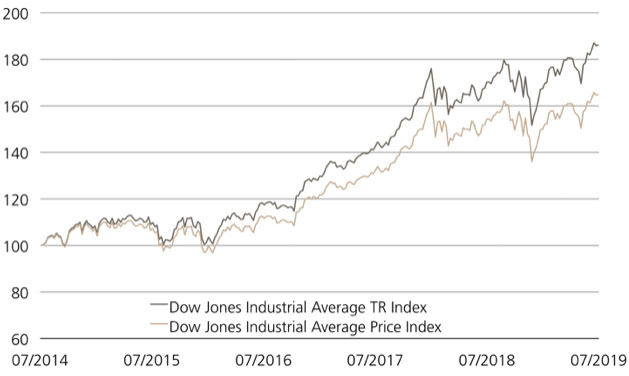
Stand: 29.07.2019; Quelle: UBS AG, Bloomberg
¹) Bitte beachten Sie, dass vergangene Wertentwicklungen keine Indikationen für künftige Wertentwicklungen sind.
Wichtige Unternehmens- und Wirtschaftstermine
| Datum | Zeit | Land | Ereignis |
| 30.07.2019 | 22:00 | US | Apple Quartalszahlen |
| 30.07.2019 | 22:00 | US | Amgen Quartalszahlen |
| 31.07.2019 | 06:30 | CH | LafargeHolcim Semesterzahlen |
| 31.07.2019 | 06:30 | NL | Airbus Quartalszahlen |
| 31.07.2019 | 07:00 | CH | Credit Suisse Quartalszahlen |
| 31.07.2019 | 07:00 | CH | Swiss Re Quartalszahlen |
| 31.07.2019 | 11:00 | EZ | BIP (Schnellrechnung) 2. Quartal |
| 31.07.2019 | 11:00 | EZ | Konsumentenpreise Juli |
| 31.07.2019 | 15:45 | US | Chicago Einkaufsmanagerindex Juli |
| 31.07.2019 | 20:00 | US | Fed: Zinsentscheidung |
| 01.08.2019 | 07:00 | FR | Axa Semesterzahlen |
| 01.08.2019 | 07:30 | DE | Infineon Technologies Quartalszahlen |
| 01.08.2019 | 08:30 | DE | BMW Quartalszahlen |
| 01.08.2019 | 08:30 | DE | Siemens Quartalszahlen |
| 01.08.2019 | 14:30 | US | Verizon Communications Quartalszahlen |
| 01.08.2019 | 21:30 | US | Fahrzeugverkäufe Juli |
| 02.08.2019 | k.A. | DE | Vonovia Semesterzahlen |
| 02.08.2019 | 07:00 | DE | Allianz Quartalszahlen |
| 02.08.2019 | 08:30 | CH | Konsumentenpreise Juli |
| 02.08.2019 | 09:30 | CH | Einkaufsmanagerindex Juli |
| 02.08.2019 | 11:00 | EZ | Detailhandelsumsätze Juni |
| 02.08.2019 | 14:30 | US | Chevron Quartalszahlen |
| 02.08.2019 | 14:30 | US | Exxon Mobil Quartalszahlen |
| 02.08.2019 | 14:30 | US | Arbeitsmarktbericht Juli |
| 02.08.2019 | 16:00 | US | Uni Michigan Verbrauchervertrauen Juli |
Stand: 29.07.2019; Quelle: Thomson Reuters
Weitere Blogeinträge:
SMI mit gutem Start
Follow us on LinkedIn 08. Januar 2024 SMI mit gutem Start Am Wochenende feierte Marco Odermatt beim Riesenslalom in Adelboden seinen dritten Sieg in Folge. 25'000 Zuschauer verzauberten das [...]
Ende gut, alles gut
Follow us on LinkedIn 18. Dezember 2023 Ende gut, alles gut Schluss, Aus, Vorbei! Auch wenn das (Kapitalmarkt)-Jahr noch nicht ganz beendet ist, von Seiten der westlichen Notenbanken scheint [...]
Geldpolitischer Showdown
Follow us on LinkedIn 11. Dezember 2023 Geldpolitischer Showdown Innert weniger als 20 Stunden treffen am kommenden Mittwoch und Donnerstag US-Fed, Schweizerische Nationalbank (SNB), Bank of England (BoE) und [...]
